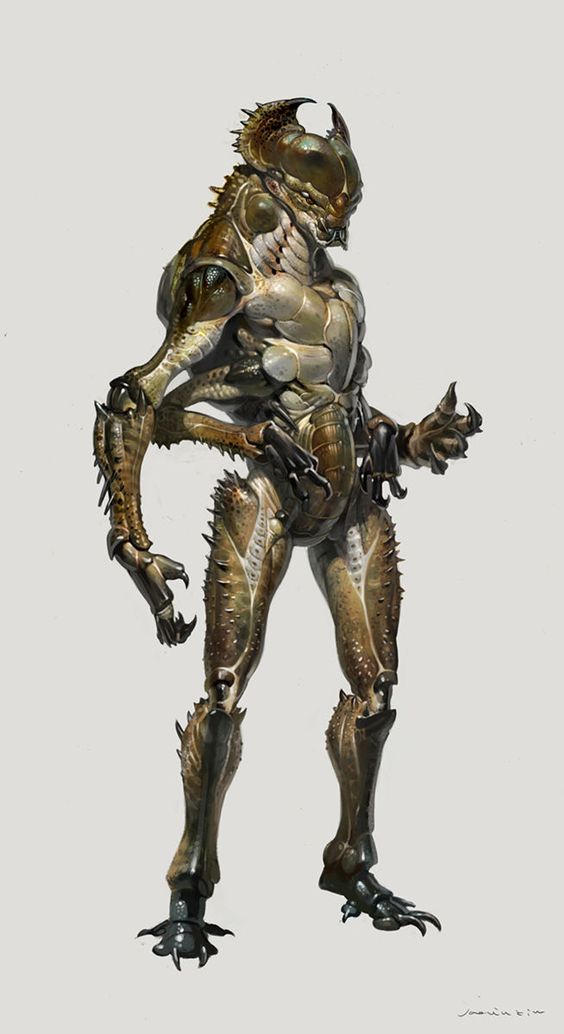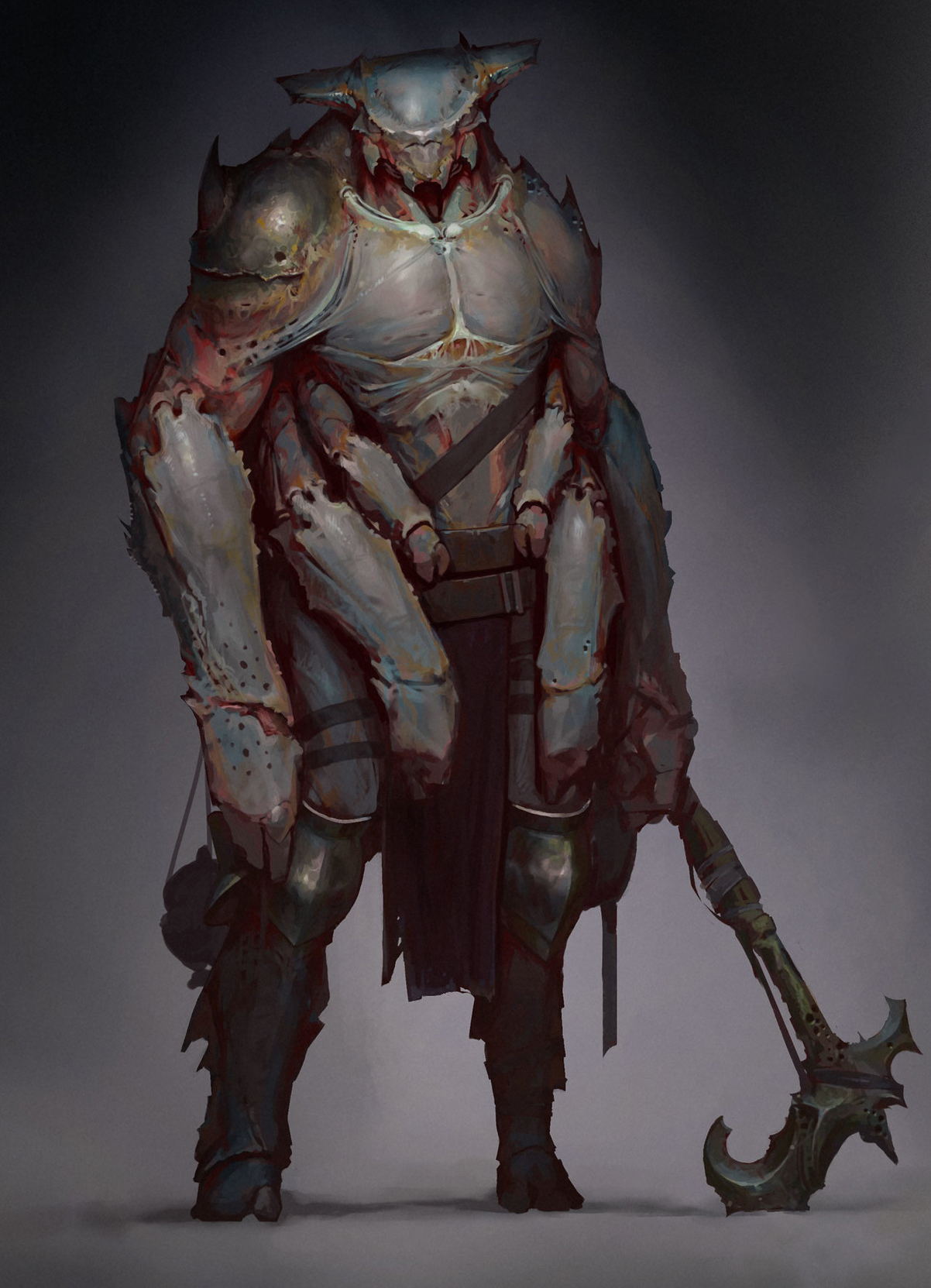Khepri
The khepri are a species of insectoid, beetle-like humanoids found in the arid regions of Khaddal and Nuria — primarily within the Yellow and Black deserts on their respective continents, although numerous extant groups have been sighted across either landmass, particularly among the more isolated spaces of the Khosha Desert in the further southern reaches of claimed Khabrayadhi lands and surrounding the mountains of Gurandav. Though they stand bipedal in the manner of other kithfolk the world over, their insectoid appearance goes far past the basic aesthetic fo their spined, hard-shalled carapices, as they are fully lacking any interior skeleton and, through what has been observed by human, elvish, and orcish researchers and scribes, appear to reproduce hierarchically in a similar manner to colonies of ants or bees.
It is a reproductive method reflected in their societies: although individual khepri, or small communities segmented from wider society, are perfectly capable of functioning individually, the largest concentrations of the species appear to propagate outwards as a singular colony, shaped with a specific intent and role from the moment of their birth and fully willing to carry out that role in full regardless of threat and outside pressure.
It was once believed that the khepri could communicate telepathically, though modern scholars of the region now believe that the insect-like beings communicate through a complex pattern of pheremones which other kithfolk are fully unable to detect. Though the khepri have at least one spoken language as well – a language which some amongst the nearby human tribes and Nereshani Bladesingers claim to be able to understand and replicate, to some degree – it is noticeably not designed for a humanoid mouth.
Whether the populations of the Yellow and Black deserts each constitute singular, united colonies or multitudinous, disparate hives is as yet unknown.
By far the most common khepri sighted by outsiders, referred to as 'drones' or simply without specification, stand roughly a head or so taller than the average human male, though possess a slimmer torso and limbs than one would typically find on a well-muscled human or elvish man. Despite their insectoid design, their silhouette is remarkably similar to that of other humanoid and goblinoid kithfolk, although their upper-arms simpy protrude from their carapice rather than having any true 'shoulders' to connect with, and they possess a second pair of shorter, lower-arms protruding from roughly the equivalent space of a human's lower ribs. A pair of stunted, single-pronged and seemingly vestigial digits hold close to the body near the 'waist' towards the base of their thorax, the bottom of which hosts two additional limbs which function as legs for bipedal travel. Such creatures seem to function as everything from workers and laborers to common soldiers and scouts, though it has been noted by many who have come into conflict with the khepri that those with darker, near-black carapices in opposition to the more often seen tans and browns – occasionally even featuring more elaborate ornamentation atop their heads – seem to take on a sort of commanding, organizational role during skirmishes, coordinating the other khepri nearby so that all may function as a single unit.
Larger khepri, usually referred to by some variation of 'soldier', 'guard', or 'brute' by outsiders, stand two to three feet higher than their more common brethren and possess wider, heavier frames with flat, dome-shaped heads. Possessing far thicker carapices which at points seem to mimick both the function and appearance of heavy steel armor, they are slow and trudging in comparison to other members of their species, but possess a terrifying brawn to bridge the gap; even the claw-like digits of a khepri drone which can near match the dexterity of the human hand are replaced, in these entities, for thick, angular appendages capable of cracking bone by grip strength alone. Though they are rarely sighted outside of population centers where they function as hive guardians, their most common secondary usage seems to mirror that of beasts of burden.
Although it is theorized both by locals and foreign scholars that numerous additional sub-species of the khepri likely exist within their hives, it is unknown to all outside of the insectoids themselves whether or not such suspicions are actually true. Unconfirmed claims and various descriptions of such beings supposedly slain and left amongst the sand exist in droves throughout the neighboring human tribes and common soldiery of Nereshani and Shudan scouting parties alike, but none as yet have been verified nor corpses or captives returned.

by Jaemin Kim




Comments